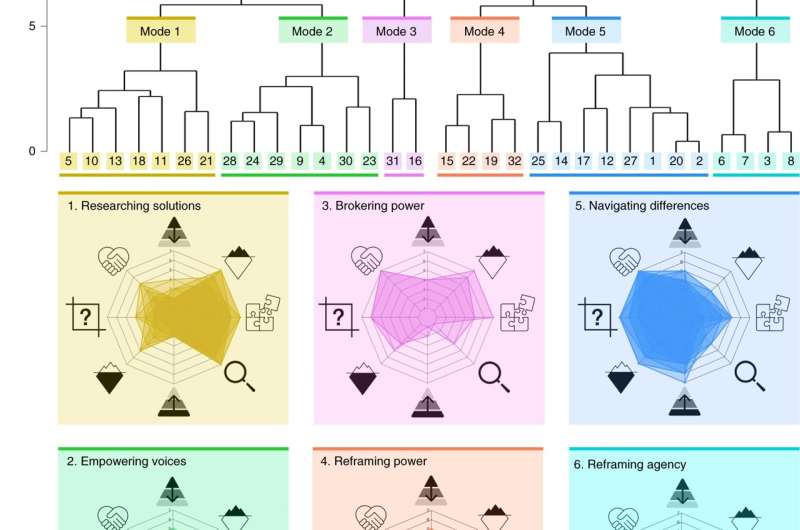Co-production connects research and action for sustainability

Research on complex sustainability issues produces a great deal of knowledge and advice. But do these also connect to the real world? The answer may be found in co-production: don't put one researcher or computer at the helm, but rather collaboratively produce knowledge and action with a diversity of people pursuing change in the world. Scientists argue this in a new study that outlines six ways of doing co-production. They show how co-production can overcome conflicting views and how this can lead to social change.
Co-production is already widely used to address sustainability challenges. "This is also urgently needed," says Dr. Josephine Chambers, lead author from the Forest and Nature Conservation Policy group at Wageningen University & Research (WUR). "Yet there are questions about the many proliferating concepts and methods."
Six ways of co-production
The international team of 42 scientists has now developed a tool for co-production. This tool is designed to help people and organizations at the helm of change, such as researchers, policy makers, activists, religious leaders and CEOs, explore how and in what situation a particular form of co-production might be valuable. The scholars identify six ways in which co-production can be used:
- Researching solutions
- Empowering voices
- Broker power
- Redefining power
- Navigating through differences
- Reframing agency
For each of these modes of co-production, they provide information on the trade-offs to be made and the risks that exist around power, impact and scale.
Examples of co-production
To arrive at this tool, Chambers and her team examined the similarities and differences between 32 initiatives that seek to achieve sustainable development through co-production. For example, by building bridges between diverse social actors such as policy makers, indigenous leaders, and interdisciplinary scientists, so that they can navigate conflicting perspectives and identify solutions that would not have been possible from the outset. The six modes are capable of addressing complex challenges: from habitat loss and climate change, to wildfire outbreaks and unsustainable supply chains, as spotlighted in their recent blog post.
Chambers: "We asked ourselves: how do our approaches differ? Why? What are the implications?" One of the cases was contributed by Dr. Jeanne Nel, Chambers' colleague at WUR and co-author. "The aim of this case was to help land and water management agencies conserve and jointly manage freshwater ecosystems in South Africa. Work was done to find common ground between policies and management tools that were previously separate, develop maps of important freshwater ecosystems while building closer relationships between land and water managers."
Application
According to Nel, each of the six modes of co-production has great potential to change narratives, policies and institutions in ways that contribute to a more sustainable world. But none is perfect on all fronts," she says. "Each method of co-production offers unique opportunities to achieve results, but also comes with challenges and risks."
For example, in situations where environmental decision-making was supported, other forms of knowledge-such as that of local and indigenous populations-risked being marginalized. Chambers also warns against an overemphasis by scientists on filling gaps in knowledge, as they argue this can hinder the achievement of real social change.
"Six modes for coproduction for sustainability" is published in the scientific journal Nature Sustainability with open access for one month.
More information: Josephine M. Chambers et al, Six modes of co-production for sustainability, Nature Sustainability (2021). DOI: 10.1038/s41893-021-00755-x
Journal information: Nature Sustainability
Provided by Wageningen University





















